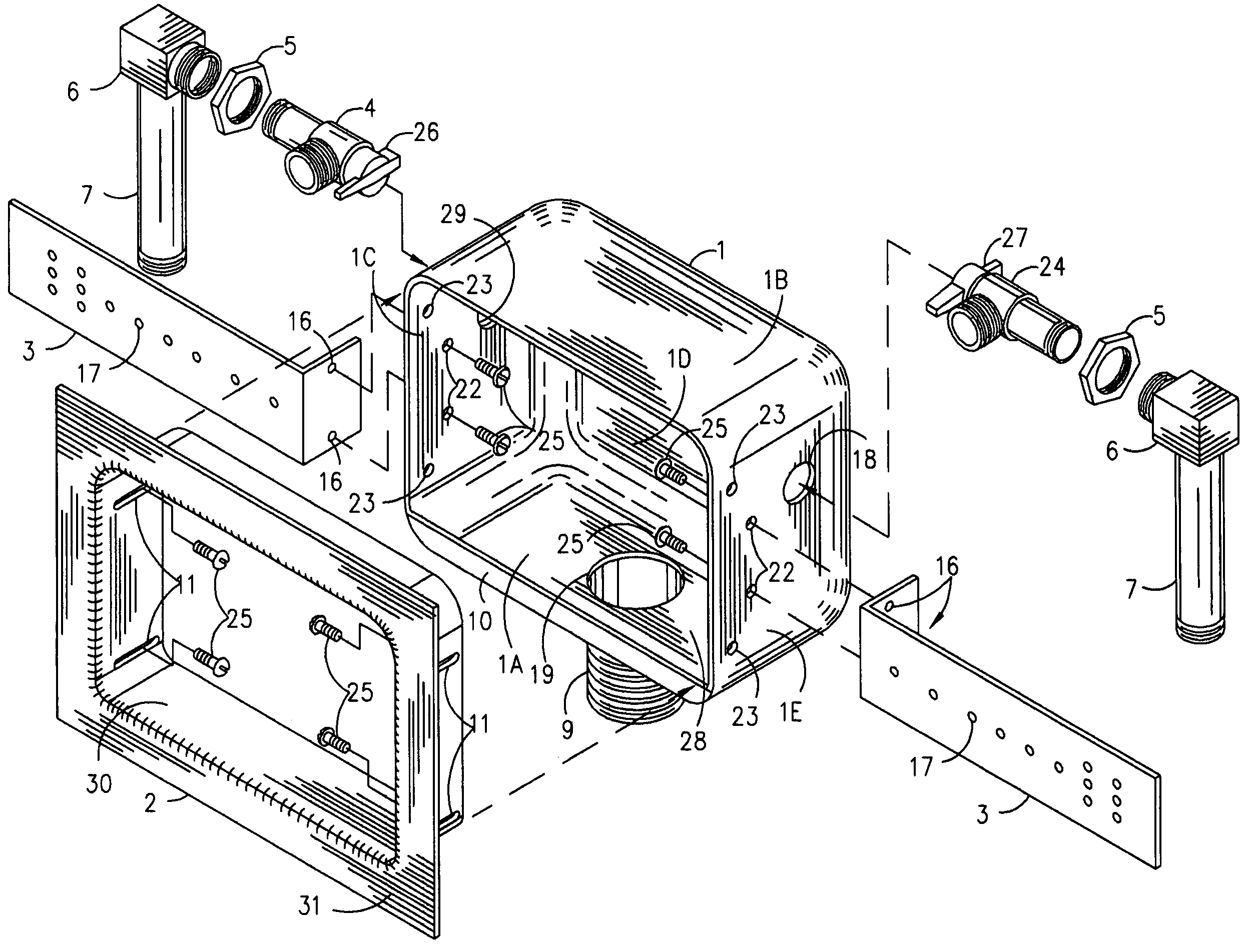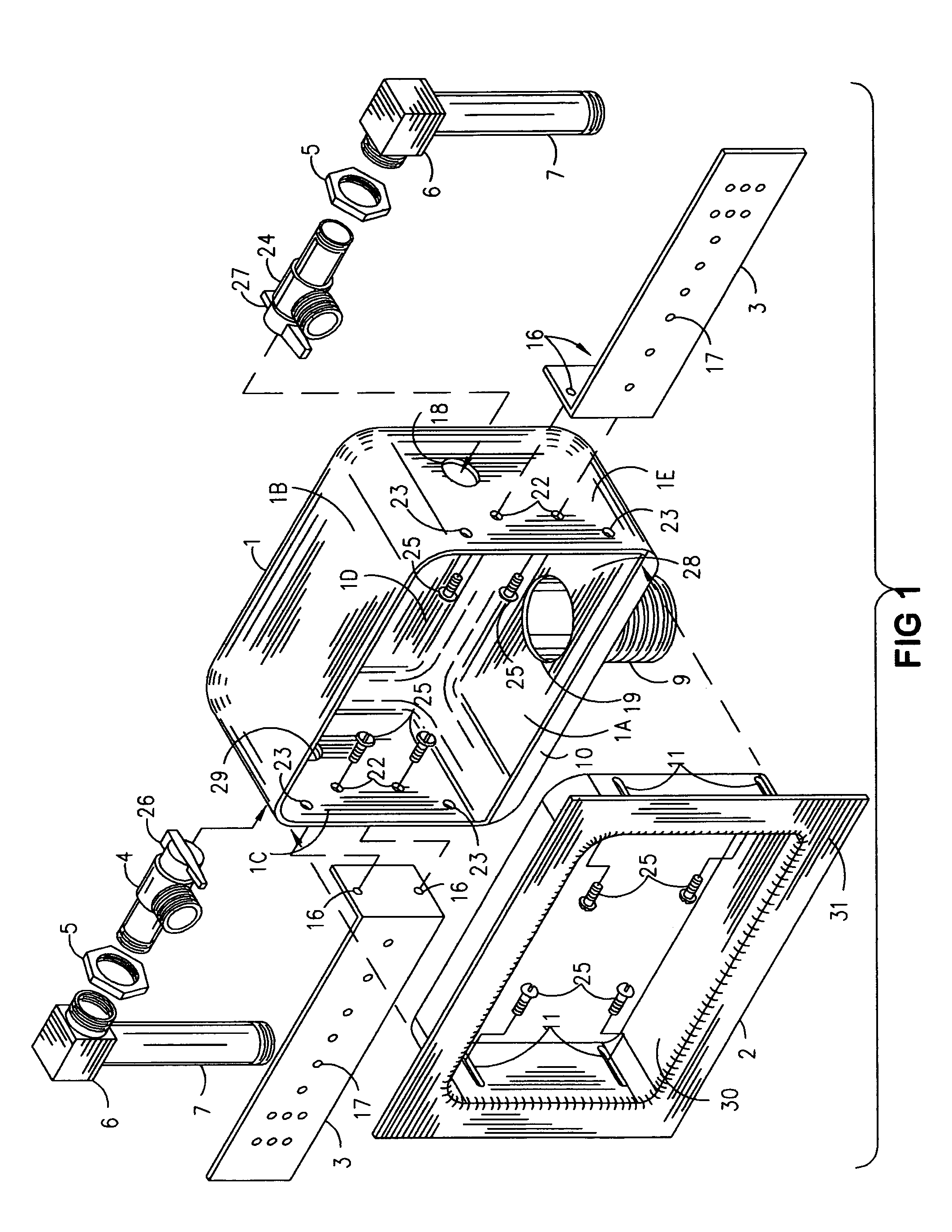The limitations of the injection molded enclosures
pose many problems during installation and use.
The semi-rigid plastics from which the enclosures are manufactured, while
corrosion resistance, are relatively fragile.
The
delicacy with which they have to be installed, without breaking, will challenge even the most experienced plumber.
The mounting tabs have a tendency to crack when struck by the hammer driving nails, or from driving screws with a screw gun into the structural wall framing.
The plastic enclosures have a tendency to distort from the stresses applied to them from the plumbing lines; both supply and drain, during installation.
Heat from the act of
soldering the supply line into the enclosure fittings can lead to extreme
distortion of the enclosure, if not actual melting of the plastic.
The above mentioned
distortion can also lead to an issue with the ability of the trim bezel to properly mate to the enclosure.
If the enclosure is distorted in any way, the trim bezel will not align properly with the enclosure and will not provide a suitable / attractive appearance.
One of the problems
metal enclosures present are extensive costs in fabrication.
Brake formed and welded enclosures are labor intensive.
The material from which the enclosure is manufactured has also been a point of serious concern.
Any failure of the
coating will
expose the base steel to
moisture, leading to the degradation of the
base metal, which will lead to a leak in to the hidden wall area behind and below the enclosure.
One issue that current plastic and
metal enclosures have in common is the lack of a means to ensure that any leaks from faulty hoses, hose washers, or valve failure will be directed into the drain connection as opposed to leaking into the wall area behind or below the enclosure.
Any such leakage in the wall area will eventually lead to
mildew, mold and structural damage, all of which have an extremely high repair cost, not to mention potential issues of liability.
As the enclosure is mounted within a stud bay of a wall and is typically at least partially hidden behind the washing
machine or dryer within the
laundry room, any leakage may go undetected for an extended period of time.
During those two months, the
moisture in the wall space and flooring had an opportunity to dry out.
Upon removal of the
washer and dryer from the
laundry room, they found massive
mildew, mold and structural damage to the home.
All damage discovered was linked to a faulty cold water valve which leaked inside the enclosure.
First, was the water simply rolled forward in the enclosure behind the trim ring.
Second, the water passed through the corners of the side and bottom of the enclosure.
Third, after an extended period of time, the water penetrated around the gaskets in the holes provided for the hot and cold water inlets which also caused
corrosion to the
powder-coated finish.
If this metal enclosure had been capable of collecting a leak of that size and directing that water to the drain, the damage would have been limited to the failure of the cold water valve which is where the whole incident started.
A leaking valve again could easily run over the front opening of the enclosure or penetrate around one of the valves coming through the bottom of the enclosure, creating the same damage he had just repaired.
The ease of installation was also questionable.
That led to twisting of the enclosure as he mounted the other bracket.
Even though he accurately measured and mounted the enclosure, the notched finish bezel would not click into the enclosure to provide a tight fit to the wall, which required the use of
silicone to fill the gap between the wall and the trim bezel.
Water from a leak that's within a dark wall space and heated by the exhaust of nearby dryers only accelerate the environments potential for mold and
mildew to flourish.
A few people in homes with mold have developed pulmonary hemorrhage (bleeding in the lungs) or memory loss, but these cases are rare and the link to mold as the cause of these
health problems has not been fully proven.
 Login to View More
Login to View More  Login to View More
Login to View More 


